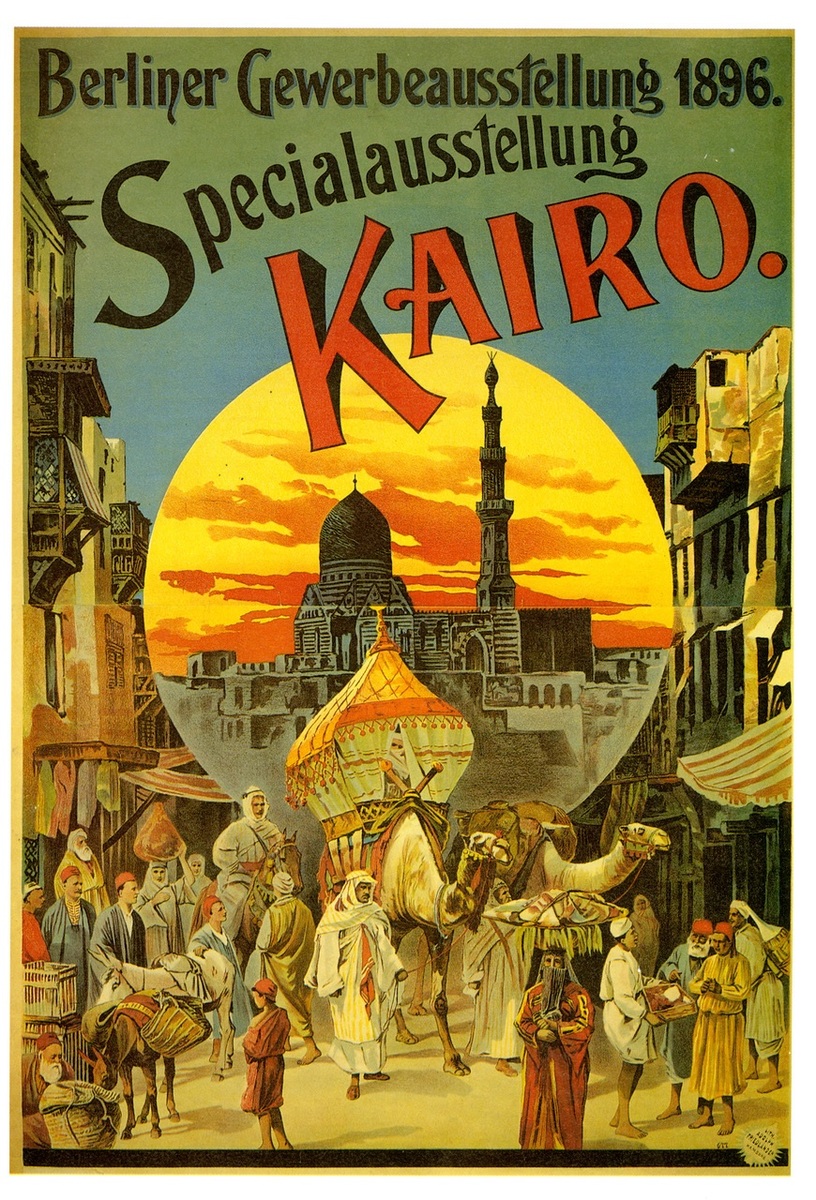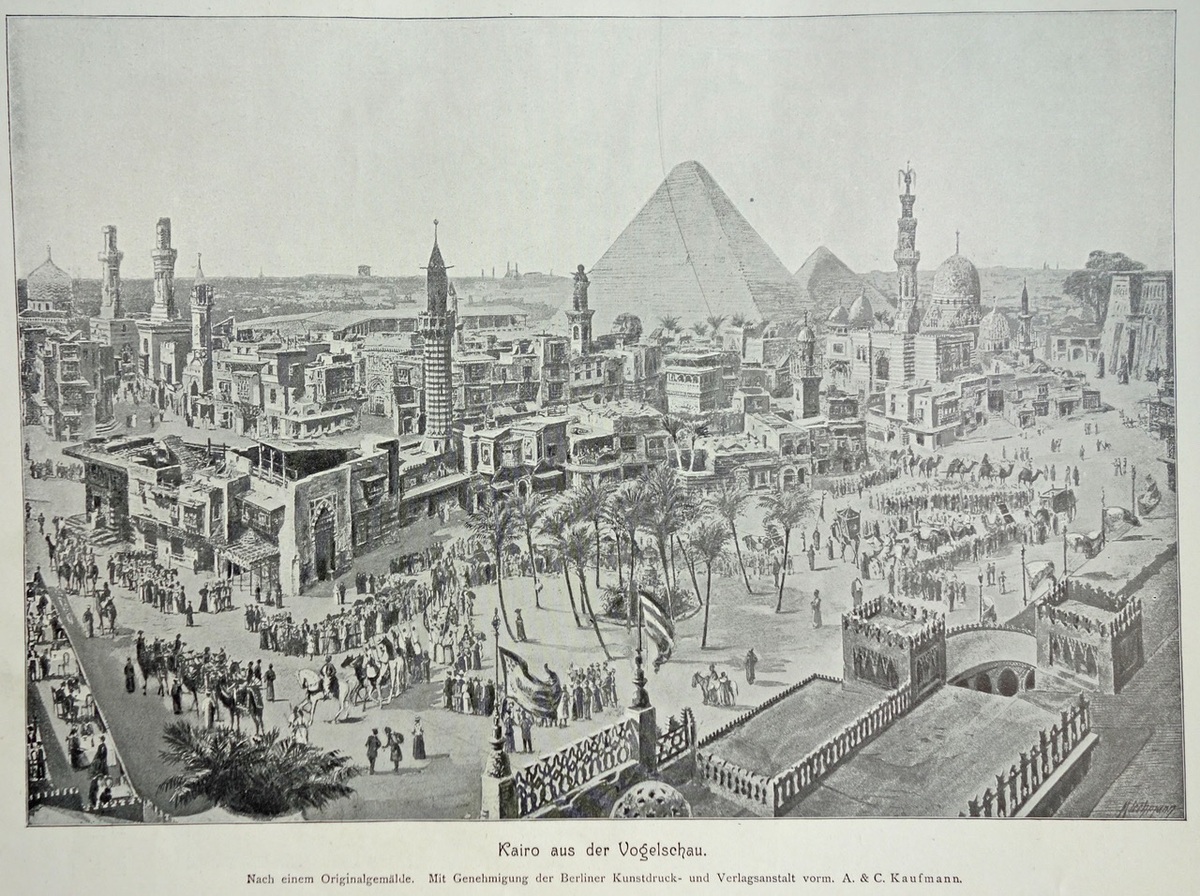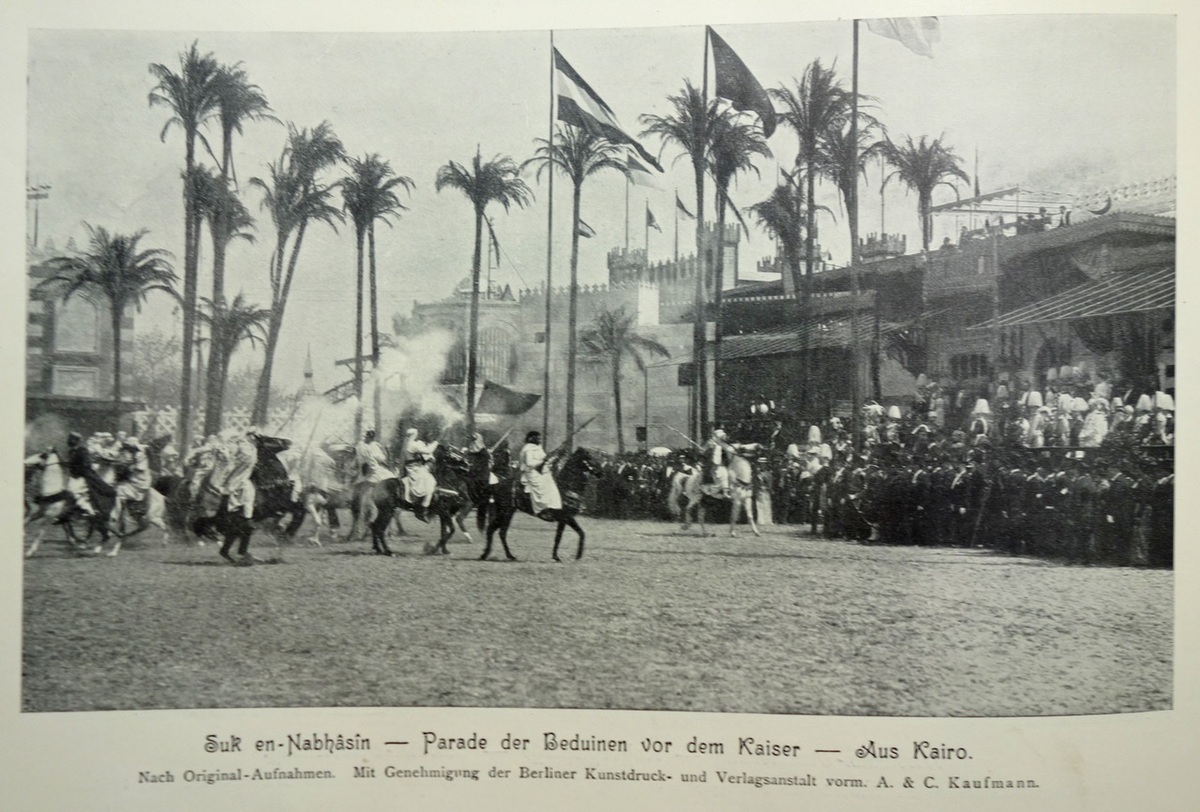Abstract
The first image in this gallery is a promotional poster for the
“Special Exhibition Cairo,” a privately-sponsored addition to the Berlin
Industrial Exhibition of 1896, was produced by the prominent Hamburg
poster design firm of Adolph Friedländer. The firm was famous for its
circus posters, its show posters (including American minstrel shows
touring in Germany), and also posters for
Völkerschauen (shows of native
peoples) that toured under the leadership of impresarios such as Carl
Hagenbeck.
The poster makes full use of dramatic color, with an “Oriental”
skyline (mosque and minaret inside of a rising eastern sun) juxtaposed
in a chaotic, exotic, and purportedly authentic street-scene from the
reconstructed “Cairo” exhibit. The colorful poster was not only
eye-catching for its romanticizing and Orientalizing motifs but became a
potent symbol of the appeal of the exotic, and the “different” in a
growing commercial culture. Such exotic and “Oriental” imagery would
become the crux of cigarette advertising and packaging for two
generations.
The second image is a reproduction of an original
painting that showcases the exoticism of the “orient” waiting to be seen
and experienced in the Special-Exhibition Kairo. In addition to the
reconstruction of the great pyramid (which included a hidden elevator,
for visitors to be easily carried to the top), notice also the
reconstructed mosque at left, and the artists’ depiction of the
pageantry and exotic pomp of Egyptians with camels and Somali horseback
riders.
The third image is a photograph showing a performance of
“Bedouins” for Emperor Wilhelm II and his retinue in the
Special-Exhibition Kairo. Wilhelm II was originally skeptical of the
Berlin Industrial Exhibition (thinking it frivolous) but was purportedly
won over by the exoticism and drama of the Kairo exhibition, in
particular. Two years later, in 1898, Kaiser Wilhelm II would go on his
highly publicized voyage to the Near East, including the Levant in the
Ottoman Empire.
Ethnographic shows [Völkerschauen]
of performers from “exotic” locales played a large role in both the
Exhibition Kairo and the Colonial Exhibition, as part of the larger
Berlin Industrial Exhibition.


